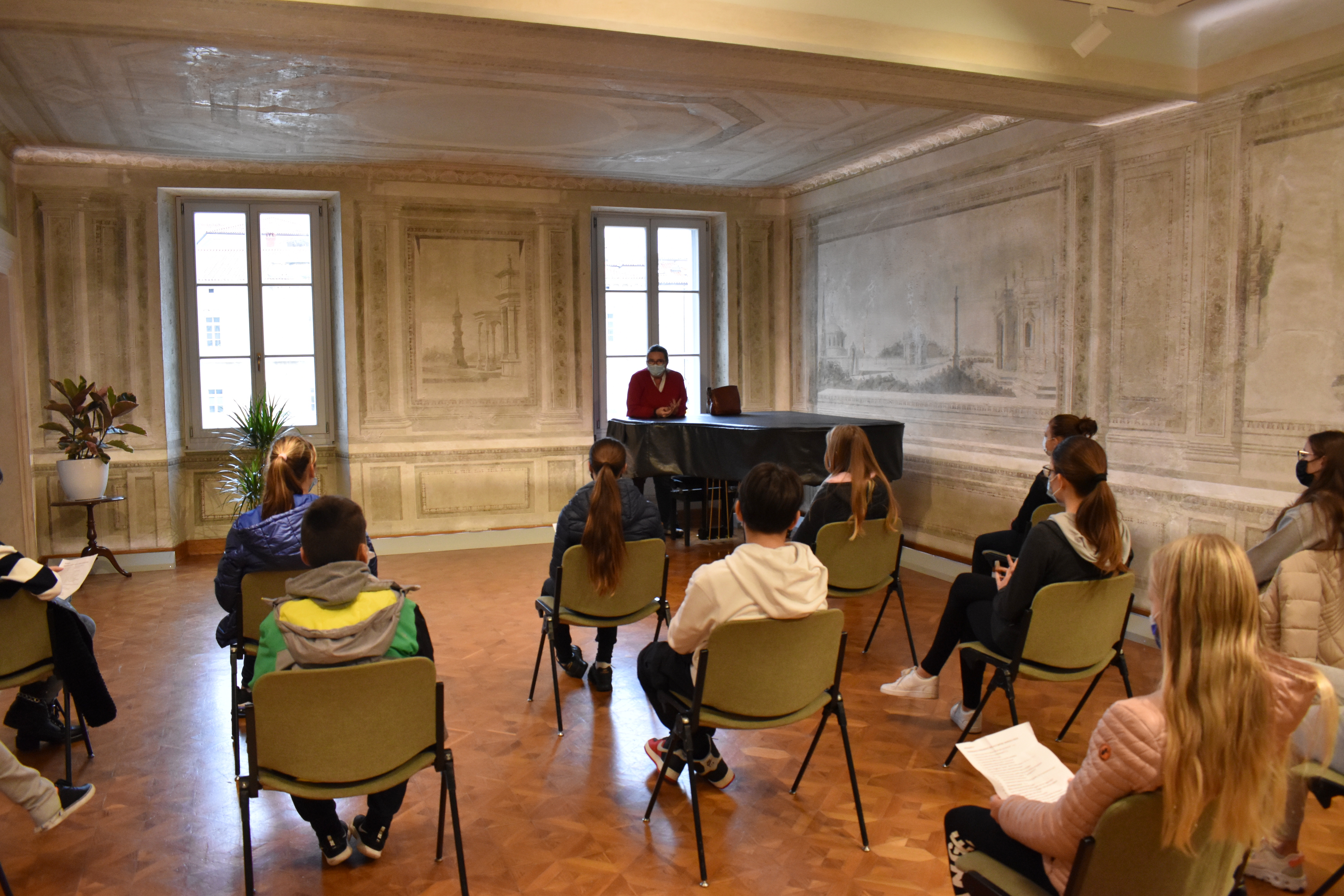Manuela Rojec iz oči v oči z učenci šole ‘De Castro’

Razpisi za dodelitev štipendij
11/26/2021Umetnost v izložbah v Turriacu
11/29/2021
V petek, 26. novembra 2021, je učence 7. in 8. razreda Osnovne šole Vincenzo in Diego de Castro iz Pirana v Tartinijevi hiši sprejela predsednica Skupnosti Italijanov Giuseppe Tartini in podžupanja Občine Piran Manuela Rojec. Srečanje sodi v sklop dogodkov z naslovom ‘Danes z nami v šoli …’, ki jih pripravlja učiteljica Katja Dellore in katerih cilj je šolske vsebine predstaviti skozi drugačno perspektivo oziroma z osebnim srečanjem z javnimi osebnostmi ustanov italijanske skupnosti, ki opravljajo različne funkcije.
Prva gosta, poslanec italijanske manjšine v slovenskem državnem zboru, Felice Žiža, in predsednik Italijanske unije, Maurizio Tremul, sta učence obiskala med poukom, tretje srečanje pa je na pobudo učiteljice Dellore potekalo na sedežu italijanske skupnosti, že zato, ker veliko otrok še ni imelo možnosti obiskati Tartinijeve hiše. Manuela Rojec jim je takoj dala besedo in jih povabila k postavljanju vprašanj, da bi s svojo predstavitvijo izpolnila njihova pričakovanja in zadovoljila njihovo radovednost. Tako so spoznali, kaj vse zajemata obe funkciji, ki ju gospa Rojec opravlja, nato pa so se tudi aktivno vključili v razpravo, ki je tako dobila širše razsežnosti. Lotili so se nič kaj preprostih tem, kot so moralna načela, vloga žensk v družbi in zelo aktualna politična zastopanost žensk.
Učenci so pokazali veliko mero zrelosti in kritičnosti, kar je poudarila tudi Rojec, ki je po poklicu prav tako učiteljica.
»Mladi te na koncu vedno presenetijo s svojo radovednostjo, željo po učenju in kritičnostjo. Politiki pogosto pozabimo, kako pomembni so, šele ko je že prepozno, se zavemo, da bi jih morali bolj vključiti, že od malega. To velja za vse, od uporabe petard do ločenega zbiranja odpadkov. Le tako bodo zrasli v racionalne in kritične ljudi,« je dejala, se zahvalila za povabilo in kolegici Katji Dellore čestitala za pobudo.
Besedilo in foto: Kris Dassena
Prevod: Nataša Fajon






